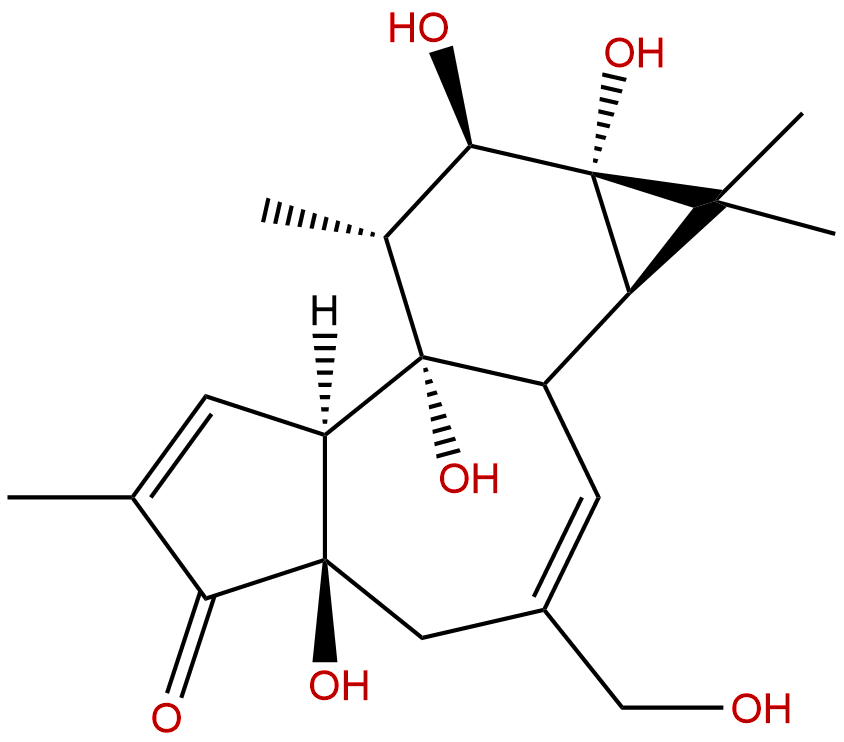
PhorbolCAS No.:17673-25-5
|
||||||||||
 |
|
|
||||||||

| Catalogue No.: | BP3720 |
| Formula: | C20H28O6 |
| Mol Weight: | 364.438 |
Product Name: Phorbol
Synonym name: 88930-15-8
Catalogue No.: BP3720
Cas No.: 17673-25-5
Formula: C20H28O6
Mol Weight: 364.438
Purity: 95%~99%
Analysis Method: HPLC-DAD or/and HPLC-ELSD
Identification Method: Mass, NMR
Packing: Brown vial or HDPE plastic bottle
Can be supplied from milligrams to grams, up to kilograms.
Inquire for bulk scale.
Phorbol is a natural product found in many plants, especially those of the Euphorbiaceae and Thymelaeaceae families.Phorbol is the active constituent of the highly toxic New World tropical manchineel or Croton tiglium L., Hippomane mancinella.It is very soluble in most polar organic solvents, as well as in water. In the manchineel, this leads to an additional exposure risk during rain, where liquid splashing from an undamaged tree may also be injurious. Contact with the tree or consumption of its fruit can lead to symptoms such as severe pain and swelling.
The purging croton, Croton tiglium, is the source of croton oil from which phorbol was initially isolated. Its seeds and oil have been used for hundreds of years in traditional medicine, generally as a purgative, and the seeds were mentioned in Chinese herbal texts 2000 years ago. The purgative effects of the oil are largely attributed to the high percentage of phorbol esters contained in the oil. Phorbol was isolated from C. tiglium seeds in 1934.The structure of the compound was determined in 1967,and a total synthesis was described in 2015.
HPLC of Phorbol

HNMR of Phorbol
